The unthinkable

FOCUS
Staff Editor-in-Chief: Myles Lowenberg Managing Editors: Shreyan Daulat Morgan Chow Arjun Khatti Writers: Ian GraysonNikhilDalrympleDattatreyaKeshavKrishnaAaronLiuWillSpencerDillonWyattBenAdamsAaronAugustineZackGoforthNolanMarcusRedmondDawsonYaoWillCliffordLawrenceGardnerMatthewHoffmanLinyangLeeAkashManikamArjunPoiJosephSunNeilYepuri FOCUS Cover illustration: Morgan Chow Focus, a magazine supplement to The ReMarker covering a single topic, is a student publication of St. Mark’s School of Texas, 10600 Preston Road, Dallas, Texas, 75230.
At some point, it all becomes too predictable.Thethoughts, the prayers. The subsequent response that thoughts and prayers aren’t enough.
Most of all, the senseless deaths.
Even the observations of this cycle itself have become par for the course in the debate on gun violence.
For such a seemingly simple issue — most, of course, are anti-gun violence — the debate over gun control has evolved into a rigid and divisive debate over our most basic rights as Americans: life and liberty.
But is anybody truly satisfied with the present state of American gun violence? There is something about the raw horror of a shooting that unites even the most partisan of enemies — that is, until the next news cycle comes around.
What we are in complete disagreement about is how to prevent gun violence. And worse, we can’t agree how to prevent it without infringing on the liberties and sensitivities of others.
That’s why investigating the causes of and solutions to the shootings plaguing our nation should be proactive.
Let’s do the work of investigating and debating now, so that one day, there may not be anymore circular and repetitive debates after another disaster.
Can the buck stop with our generation?
Right now, high school seniors were born in 2004 — five years after the Columbine shooting. Every death after that has been a fixture on TV and social media for all of our lives.
Whatever solutions those in the future will attempt, there will be one constant: Memories of these shootings are now deeply ingrained in our political consciousness from the very start.
If there is any time where the will exists to take decisive action, it will be in ours.
Myles Lowenberg Editor-in-chief
Let’s not waste it. 2022 alone, there have been more than 450 mass shootings in America. deaths are an issue without precedent in the rest of the developed world.
INTRODUCTION 3
In
These
Is anyone satisfied with the goWheresituation?currentdowefromhere?
6
Through the confusion
When an unsuspecting woman sought peace at the Geneva Presbytarian Church, she was met with violence she never could have expected.
A dangerous link
Mental illness and gun violence — is there a connection, and how do we address the two? A deep dive into one of the most discussed causes of gun violence.
Are we safe?
An inside look at the security staff that works around the clock every single day to protect St. Mark’s and their constant efforts to keep the school safe.
4
Inside
9
28 Featured
Panic at the terminal
Senior Ethan Gaertner experienced a local shooting scare at Dallas Lovefield as it happened.
12 Timeline
The history of gun control efforts in the United States, from the nation’s founding to the present day.
14 Too many to count
Among all the advanced countries in the world, the United States is a large outlier in the amount of guns possessed. How did this come to be?
16 Editorials & opinions
Writers for the publication give their thoughts on issues relating to gun violence, including on voting, media coverage, and new technology.
20 Taking action
The issue of gun control has exploded onto the political scene for the upcoming midterm elections in both Texas and the nation as a whole.
22
To the future, from the past
Those from gun-free countries voice their opinions on the current state of gun laws in the United States.
24 Guns to gardens
The effort to change tools for violence into tools for life, one step and one weapon at a time.
Stories of violence. Stories of change. Stories of survival.
TABLE OF CONTENTS 5 8

 Story: Linyang the
Story: Linyang the
c
Lee throughonfusion
6
Everything was going so well.
After moving from the Northeast with her husband, she had found a community of people she could relate to and share her Christian beliefs with — beliefs she’d held dearly for a lifetime.
Finally, after five years in her new home, Jane* had found a group of people just like her. A group of people she could sit down for lunch with on a warm Sunday afternoon and celebrate their pastor’s return from Taiwan.
This she knew.
But on May 15, 2022, what Jane didn’t know was who the man in the corner was. The man with the dark, uniform-like clothes. The man she thought was a guard, stationed to protect.
What she didn’t know was why he locked the doors with a scowl.
What she didn’t know was why he was reaching into his pocket.
And then as the shots rang out like balloons popping, she still didn’t know.
Am I going to die?
In the confusion of the Geneva Presbyterian Church Shooting, all she could do was hide.
Escaping the colder climate of Michigan, Jane brought her life-long religious beliefs to Laguna Woods, Calif., where she joined a church community of mostly older Christians. But after only five years, she experienced a tragedy that would haunt her for a
lifetime.“[The shooter] pulled a gun out from his pocket and then he pointed it at the ceiling to shoot one time,” Jane said. “I didn’t think it was a real gun. Nobody thought that it was a real gun. Everyone was quiet, someone asked if a balloon popped. And then it began. Four or five shots rang out and people started getting down on the ground, face first. There were two pillars about 10 inches wide that I hid behind.”
After more than two minutes of continuous shooting, their beloved pastor came to the rescue.
“I saw the pastor running down from the stage, and he pulled a chair and ran to him and knocked the shooter down to the floor,” Jane said. “And as we looked around, we saw the blood. Blood around Dr. [Billy] Cheng, who was lying face down on the floor with 3 shots in his back.”
Jane couldn’t help but think about what could have happened. The tragedy could have been so much worse, and she is thankful that so many people escaped unharmed.
In hindsight, the tragic event was a stark reminder
that no amount of drills or mandatory safety videos can fully prepare an individual for the situation Jane was thrust in — a situation of confusion, dismay and disbelief. A situation of life or death.
“Everything happened so fast,” Jane said. “Nobody was crying, nobody was shouting, because it was just so fast. If not for our pastor taking out the shooter, the result would’ve been completely different. He would’ve had enough time to put more bullets in people, because nobody was able to go anywhere, and nobody was strong enough to come against him.”
It was the brave acts of a select few that saved so many, perhaps combining with the strength of a greater power, according to Jane.
“We all broke into tears when we realized that, in a way, Dr. Cheng sacrificed himself,” Jane said. “If not him, someone else would’ve been down, possibly multiple others. And, of course, we appreciate the pastor who knocked [the shooter] down, which saved all our lives. Ultimately, we thank God that [the shooting] wasn’t any worse. Who knows what could have been.”
*Per the source’s request to remain anonymous, we used the pseudonym ‘Jane.’

THROUGH THE CONFUSION 7
PANIC at the terminal
Senior Ethan Gaertner was minutes from danger.
As the morning hours waned, Gaertner was on his way back to his work station, navigating through 100-foot baggage claim hallways and Southwest ticket counters.
He’d been a Dallas Works summer intern for over a month at that point, learning the ins and outs of Dallas Love Field.

But, as he got settled at his information booth to resume his shift, a fellow employee hastily approached; he had news to share.
There’s an active shooter down there.
His monotone voice was confusing. Gaertner hadn’t even heard gunshots.Wasitreally true?
But as the man pointed down the hall, a crowd of frantic travelers emerged.Theywere running.
Running away from the exact spot Gaertner had just passed by five minutes ago.
Amid the chaos, Gaertner and the others were forced to remain in the offices, with no clarity on what was“Ihappening.don’tthink anyone got a video or a clear view of the shooter just because it happened so fast,” Gaertner said. “But when we were in that baggage claim office, a bunch of people talking about what could have happened. There were so many different stories that we just had no idea.”
After the suspect was taken into custody, Gaertner went back to work.
“It didn’t derail my job too long,” Gaertner said. “It probably took 30 minutes just to clear everything up.”Gaertner’s internship ended soon after the scare, so the fear of going back to work didn’t last long.
“It was actually my last week, so it was kind of weird,” he said. “For the rest of the week, I was more cautious. I think everyone was.”
And, even though Gaertner doesn’t work there anymore, those events won’t leave his mind anytime soon.
go. I saw an employee escorting people to the baggage claim offices. I helped him do that, and we were able to sit in there until everything cleared.”
“When I go back, I’ll definitely think of what happened and what could’ve happened,” Gaertner said.
Story Arjun Khatti, Ian Dalrymple, Dillon Wyatt
7 July 25, 37-year-old Portia Odufwa walked into Dallas Love Field, threatening to blow it up. After drawing attention to herself and firing two rounds into the ceiling, security and police were quick to theAlthoughscene. the suspect was taken out by police in a matter of minutes, the danger it presented to travelers and workers knowtodidn’tGaertnermyracingfrightening.Gaertnerlikewas“Alotwasthroughmind,”said.“Iknowwhatdoto.Ididn’twhereto
Right here. The miles—Prestonairportatscareshootinghappenedtheclosestto10600Roadaboutsevenaway.
ADANGEROUSlink
A look at the connection between mental illness and gun violence. See coverage, pages 10, 11
Story: Arjun Khatti, Grayson Redmond, Linyang Lee
A DANGEROUS LINK 9
Every timeithappens,youhearsamethe thing.
Arguments. Accusations. Thoughts and prayers.People demand change.
They march. They protest.
Politicians make promises.
Politicians break promises.
Then, everyone waits for the next massacre.
Now, the recently passed federal Bipartisan Safer Communities Act seeks to combat violence by closing gaps in gun laws and expanding background checks. But a large chunk of the act is directed toward expanding mental health
Thatservices.might placate politicians, who are quick to scapegoat the mentally ill, but the numbers don’t add up. Researchers have found scant evidence connecting mental illness to gun violence.“We often hear the argument that, if we have better mental health services, or if we could connect our mental illness treatment histories to gun ownership applications, we could prevent gun violence,” said Dr. Gabby Reed, Director of Counseling. “The data just doesn’t support that. If you look nationally at our rates of mental health and mental illness, they’re very comparable to many other similarly developed countries. And yet, our gun violence outpaces all of them. When you look at those numbers, it’s really hard to agree that there’s a strong correlation between mental illness and gun violence.”Another inconsistency with the mental illness argument, according to Reed, is that most mass shooters do not exhibit symptoms before the shootings.
“When you look historically at the profiles of the average school shooter, these are people who are unlikely to have been diagnosedpreviously with mental illness,” Reed said. argument“The might then
be, ‘Well, if they could have accessed services before the event, then maybe we could have prevented this.’ But the problem is, again, these generally aren’t people who are significantexhibiting symptoms that would warrant services prior to these events.”
In most cases, Reed said, gun violence is perpetrated by young adult males who are isolated, have been radicalized, and who have found groups and people on the internet who believe similarly to them.
“These are not necessarily depressed or anxious individuals,” she added. “They’re not usually psychotic individuals. They’re often just lonely, isolated, angry people who are perpetrating these events.”
The first to step to prevent such alienation from occurring is to have a good support system in place both in the school and home environments.“Asmental health professionals on campus, we are careful to be vigilant if there are people on our campus who we are concerned about,” Reed said. “Maybe they’re isolated or are showing interest in things that are outside of the norm or more violent than usual.”
At a conference she recently attended, school counselors talked about how to follow the trajectory of each individual student and understand them better, making sure that they feel connected in school and have good support at home.
“We need to make sure that they have trusted adults who they know care about them,” Reed said. “Connection has proven to be the number one protective factor against this type of behavior.”Eventhough there is little data to support that people with mental illnesses are the main perpetrators of gun violence, instances of them

committing these acts still occur. However, according to Dr. Andy Keller, filtering through hundreds of thousands of people with a mental illness to find one who might resort to violence is extremely implausible.
“If you take the Uvalde shooter, obviously I can’t diagnose him based on media accounts, but if you look at him cutting his face and posting pictures of a dead cat, those are pretty clear signs of a mental illness,” said Keller, President and CEO of the Meadows Mental Health Policy Institute. “I wish somebody had addressed that, because there’s a good chance something different could have happened. But, 99 percent of people who have those symptoms are never going to do anything. That’s the issue: It’s like finding a needle in a haystack.”
Keller also emphasizes that the majority of individuals with mental illnesses improve
drastically after finding treatment.
“Around two thirds of people with mental illness are going to get better if they get treatment,” Keller said. “These illnesses are very treatable and manageable if we reach them in time instead of making people get to a crisis point before we give them help.”
The first step is to make mental health treatment more accessible and accepted.
These illnesses are very treatable and manageable if we reach them in time.
Gabby Reed 7
10
“One way is to just talk about our own mental health needs more and let people know that it’s just part of life,” Keller said. “I have an anxiety disorder and also run a big organization and talk to the Senate. Sharing our own stories of illness, each altering emotion, thinking and behavior differently. However, symptoms of each one are often grouped together, despite the many distinctions between them.”
According to Mental Health America, there are more than 200 classified forms of mental illness, each altering emotion, thinking, and behavior differently. However, symptoms of each one are often grouped together, despite the many distinctions between them.
“I’ve had my anxiety disorder my whole life,” Keller said. “If you have an anxiety disorder like mine, you’re a major rule follower. For other mental illnesses, like if you have an untreated psychosis, where you’re having hallucinations and voices telling you to do things, there is a higher likelihood that you will engage in violence. It’s actually much higher than normal, but that higher risk of violence goes away entirely if they’re in treatment. So there are some mental illnesses, very specific mental illnesses, that will increase the likelihood of violence, but even in those cases, the vast majority of people with those illnesses are not going to be violent.”
Ultimately, Reed doubts creating laws to prevent individuals who are mentally ill from procuring guns would work.
“Even if you had a mandatory psychological screening prior to gun ownership, people would still be able to slip through the cracks,” Reed said. “Also, if your only proof of mental illness is a record showing that a person has been in a mental illness facility, that would only apply to a very small percentage of the population.”
It may be more effective, she added, to focus on identifying wider categories of those at risk of committing violent acts.
“Rather than focusing on identifying individuals, we should focus on the types of people and the ways that they commit these crimes,” Reed said. “For example, a waiting period to buy a gun is a really important idea because, if I am acting impulsively, am angry at that moment and can get a gun immediately, I am much more likely to use it for violent purposes. If I have to wait 48 hours before I’m allowed to go pick up the gun, I’ve had time to maybe cool off and think.”
In addition, Reed believes addressing many different factors of the gun market would create change.“Establishing which guns are legal to be purchased, the number of guns that can be purchased, the age at which it’s legal to purchase a gun, and the amount of time you have to wait to buy guns are all changes that could be considered without eliminating the

right to guns,” Reed said.
No matter what policies are put in place, students can make a difference by speaking up and telling an adult when they feel apprehensive about“Whensomeone.faced with something worrisome in another student’s behavior, I think it could be tempting to say, ‘You know what, it’s not a big deal,” Reed said. “My request to our students would be this: Listen to that gut feeling, and just come talk to us. I would also ask that everyone in the community keep their eyes open for students who seem to be isolated. Building connections with these students or
even just offering a kind word can change everything.”Kelleralso emphasizes the importance of speaking up when something feels off, no matter how difficult that might be.
“You guys have counselors and other people who care about the wellbeing of students and who are very familiar with the tools that can be used to help a young person in distress,” Keller said. “You have to approach them when something feels wrong. It’s scary to do that as a young person. It’s scary to do that as an old person, even, but we all have a responsibility.”
For many experts, the link between mass it might sound, or even not there at all.
shooters and mental illness is often less obvious than
Mental illness rate (2019) 14.95%19.35%15.22%16.63%16.93% Firearm homicides per 100,000 (2019) 0.500.180.040.324.12 Country CanadaAustraliaEnglandFranceU.S. A DANGEROUS LINK 11
A UNITED STATES HISTORY OF

On Dec. 15, the first amendmentsten to the isAmongareConstitutionratified.thesethesecond amendment, dictateswhich the right to bear arms.
Story: Linyang Lee
The control.regardingcourtstayedlargely19thcourseoverGovernment,Federaltheofthecentury,outofcasesgun 1934 1938
FDR’s National Firearms Act taxes manufacturing, selling and moving firearms, including shotguns, rifles, and machine guns. The National Firearms Act was the first national gun control legislation passed in America.
The purchasefelons,aspeople,thatItsellersimporters,manufacturers,licenseaintroducesFirearmsFederalActfirearmstoandofguns.alsooutlinedsomesuchconvictedcannotguns.
GUNCONT R OL
1791 1800
7
12
Supreme Court case MillerStatesUnitedvs.
thewasTheshotguns.ofinterstatetoCongressallowsregulatesalesshortbarreldecisionbasedonfactthat a sawed-off shotgun has no purposemilitia,”regulatedto...relationship“reasonableawell-theof firearms as dictated in the amendment.second
1968
The regulationlicensingtightenedpurchase,forage21-year-oldimposedpurpose,”“sportinggunsimportationbillremained.provisionsstatutorymanyunderControlbyisFirearmsFederalActrepealedtheGunActLBJ,butpreviousThebannedtheofwithouttherestrictionhandgunandon the firearms
number.haveormanufacturedthatandindustryrequiredallguns,imported,aserial
Congress passes the Firearm Owners protection Act, which prohibited national registry of dealer records, limited ATF inspections to once a year and gave a more lenient definition of what it meant to engage in the firearms business. It also allowed licensed dealers to sell firearms at gun shows and loosened regulations on ammunition sales and transportation.
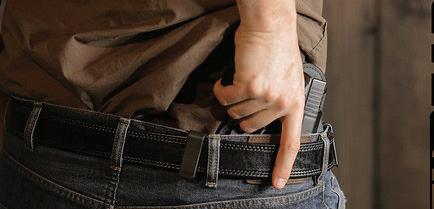
Among the various subsections of the Violent Crime Control and Law Enforcement Act is the Public Safety and Recreational Firearms Use protection act. The act included a ten-year ban on assault weapons, from 1994 to 2004. The bill outlawed the manufacture, transfer, and possession of semiautomatic assault weapons, although previously owned weapons were grandfathered in. It also banned ammunition magazines of more than ten rounds.

President Bill Clinton signs the Brady
CheckBackgroundInstanttheestablishedTheandmanufacturersfromtocompletedchecksbackgroundrequiringthelawofPreventionViolenceHandgunAct1993.TheamendedGCAbythatbepriorpurchasedealers,importers.lawalsoNationalCriminalSystem.
George W. Bush signs the Protection of companies.bymanufacturedvictimscivilfederalnamedfrommanufacturerspreventsAct,inCommerceLawfulArmswhichgunbeinginorsuitsbyofgunsthose
District v.ColumbiaofHeller overturned United States v. Miller’s precedent by focusing on the right“individualtopossess a firearm inwithunconnectedserviceamilitia.” It also challenged a thelawsmentally“felonsprovisionsnullifyhowever,doesD.C.inhandgun32-year-oldbanWashington,Thelawnot,onandtheill,orforbiddingcarrying of firearms in schools conditionslawsbuildings,governmentandorimposingand qualifications on statecommercialtheofarms.”
1986 1993 1994 2008 2005 1939
TIMELINE 13
Too many
Leading the Pack. When compared to the G7 countries, the United States is alone in first for most guns per citizen. The U.S.A has 120.5 guns for every 100 Americans followed by 34.7 for Canadians. count
The portion of each gun filled in black represents how many firearms a country has per every 100 people.

 Story: Dillon Wyatt, Arjun Poi & Akash Manickam
Story: Dillon Wyatt, Arjun Poi & Akash Manickam
14
to
Going to school, 11-year-old Miah Cerillo didn’t think she’d have to smear her best friend’s blood all over her face.
Going to school, Cerillo’s teacher didn’t think the last words she would ever hear would be, “Good night.”
Going to school, 10-year-old Jayden Perez didn’t think he’d have to tell a CNN correspondent later that day that almost all of his friends died.
Mass shootings similar to what happened in Uvalde, Texas at Robb Elementary rarely take place outside of the United States.
Uvalde was the 27th school shooting this year. As of September, there’ve been over 350 mass shootings this year.
In 2020 and 2021, the number surpassed 600.
The United States has 120 guns for every 100 people — over 12 times the global average.Internationally, the United States is known for its gun culture. America’s gun culture is unique. Why?
When he was younger, Jake McAuley ‘08 never questioned why America had more gun violence than any country in the world. However, when he became a correspondent for the Wash ington Post and lived in Paris and London, McAuley understood the culture difference between the U.S. and the rest of the world.
“Gun control is not an issue in those countries,” McAuley said. “It’s not seen as part of the culture, and it’s not seen as part of the citizens’ rights to keep and bear arms. There isn’t a dis course to the level that we have, and the frequency of attacks isn’t anything close to that in the United States.”
After moving here during his sophomore year from the United Kingdom, Tomek Marczewski ’22 found major differences between the two countries.
“I’ve met people here that have shot guns on the regular and go hunting,” Marczewski said. “People don’t shoot or hunt in the UK except in very specific circumstances.”
Seeing how Europeans lived without the threat of mass shoot ings or the need to own a firearm, McAuley realized that his home was not as safe as he once thought.
“I think living abroad gives you a lot of perspective on where you come from,” McAuley said. “When I was living abroad, my friends always asked me to explain two things in particular about the U.S. that seemed to make sense to me, since the U.S. was my home. One of those was about healthcare, and the other was about our gun issue. Every time there is a mass shooting, my friends are stupefied. They have no idea how the richest country on Earth and in the history of the world can tolerate this level of senselessMcAuleyviolence.”believes that the issue stems from the misconcep tions of our nation’s constitution.
“It comes down to how societies conceive what the rights of citizens are and what security means,” McAuley said. “In America, we have this perception of the Second Amendment that somehow permits people to be able to purchase highly destructive firearms as an alleged means of personal protection or security. At the end of the day, countries like France and Britain that have extremely strict gun control laws don’t have the same kind of mass shootings. So you wonder, at what point do we realize that, in the name of security, we are actually putting our citizens at a greaterMarczewski,risk?”
like McAuley, learned how little control our country has over gun violence.
“The problem that the U.S. has is that even from the very beginning, it’s a bunch of united states,” Marczewski said. “It’s not a single country. The whole division of federal and state power is something that I found very difficult to come to terms with because I was like, ‘What do you mean state power? You all belong to the same nation, so you should all be subject to the decisions of the central government.’ The most you get in the UK is that the Scots threaten to leave every so often, and then they don’t. And then that’s the end of it. London is the capital and the seat of government, and decisions made there hold sway over the rest of the nation.”
With all the questions that go into controlling gun violence, McAuley believes that because of how long we have decided to tolerate gun violence, it has become part of everyday life.
“I don’t know if there is an answer,” McAuley said. “Given the constitution that we have and the bad faith actors who ma nipulate it to their own ends, I’m not sure what the solution is. It seems like people are content living in a horrible nightmare where we’re all sitting around waiting to be shot.”
The increase in gun violence, especially in Texas, is one of the many reasons Marczewski believes that eradicating guns is a possible solution.
“I heard somebody say that Americans need guns in case they need to revolt again, ‘It’s the right of the people to revolt against the government’ Sure? But…you’re not going to do that,” Marczewski said. “I know a lot of people want guns for personal protection, which I understand, but I feel like they don’t realize that getting rid of guns would, if not eliminate, at least greatly lessen the need for personal protection. But protection from the government? If the government wants to get you, you having a gun is not going to make a difference.”
Marczewski believes that in order to get rid of the gun vio lence in the United States, understanding our country’s history and resources during that time are key to making progress for the future.“Ithink people here forget that the American Revolution was not won by a bunch of farmers who had their own weapons and went to fight a dictatorship. It was won by an organized anti-gov ernment that organized a militia against another professional army.”
TOO MANY TO COUNT 15

Editorials Opinions& 16
What now?
As of a week ago, nearly 30,000 people died because of gun violence in the United States this year.
To many, gun violence is as critical an issue as any in the country.
To high school students cowering under desks.
To the children dodging stray bullets.
To policymakers in Washington looking ahead to the midterms.
The violence continues. Soundbites fill social media. Journalists write articles. Statisticians edit their data. Parents bury their kids.
Guns may jam, but the death never seems to stop.
We asks ourselves why.
Why can’t the greatest nation on earth protect its children?
And every time there’s a new shooting, a new tragedy to cover, to light candles and hold vigils, to bring up on a podium far away from the violence, we ask ourselves, what now?
First, it is important to understand the various backgrounds of Americans and how they contribute to the gunAttitudesdebate.towards
guns vary from rural to urban areas. In many rural areas, guns are a part of every day life. Guns can put food on the table, and kids are taught to hunt from a young age. Through this process, they can learn gun safety and truly have respect for a firearm, its capabilities and the benefits of owning one.
For instance, in Texas, larger guns are required to eliminate feral hogs populations in the central, southern, and western parts of the states. Feral hogs aren’t just a nuisance – they threaten the livelihood of farmers seeking to put food on the table for everyday Texans. And they breed incessantly.
With this in mind, it’s easy to understand many rural perspectives on gun laws; any attempt to control their ownership of a firearm either makes their daily lives harder or, in the extreme, can undermine their efforts to protect their property and secure a comfort able Onincome.theother hand, Americans in metropolises need not worry about a feral hog showing up on a subway or in a Starbucks. They do not live in border areas frequented by cartel coyotes and so vast that law enforcement cannot credibly deter illegal activity. They are not raised with the notion that a firearm can be a tool and not just a weapon. Urban Americans see the crime. They see police tap and the chalk outlines and the statistics showing that, on average, it’s more likely for minorities to be victims of gun violence than
their white counterparts.
As a wedge grows in the politics and discourse in this country, it is straightforward to conclude that the urban-rural divide is the driving force. However, it’s more complicated than very different communities simply growing apart. The origins of gun culture in America lie in the country’s origins – a vast wilderness which generations built into a nation. The individu alism and self-reliance colonists brought across the Atlantic manifested itself in an emphasis on property rights. Later, it brought about a revolution against the tyranny of the most powerful nation in the world, in many ways a resistance against oppression and regu lation that gun rights activists contend the gun debate is all
Theabout.power of arms ingrained itself in America’s psyche and the country’s historical narrative. It was also embedded into the Constitution. As such, radical gun control measures will always face resistance, from Californian attempts to make it nearly impossible to own a larger firearm to Texan initiatives aimed at permitless carry.
We must find common ground. Though politicians may default to extreme solutions, by understanding the other side of the gun debate, Americans can tran scend the ideological divide.
So, what now? In the short term, little may change. Maybe even in the long term. But we must agree on what we can and agree to disagree on what we can’t. No solution will be amenable to all, but the path to finding the best one begins when we can all under stand what the other side is fighting for.
EDITORIAL 17
Media coverage matters
“It’s part of every day life.”
Our country has chosen to let it be an issue.
Every so often, we watch on the news that someone opened fire at a school, restaurant, or airport with a gun they shouldn’t have had.
We watch as a victim’s family member cries for their lost loved one.
We watch gun violence happen, yet we don’t do anything.
The news treats it like a typical news story. Relevant. Timely. Powerful.
It gets clicks and viewers. But it doesn’t stop the problem.Journalists have a unique power unlike any other job in our country.
People will turn on Tucker Carlson or
Rachel Maddow and believe whatever they are scripted to say.
The top stories from the New York Times sit on millions of families’ breakfast tables.
If the president makes a big mistake, everyone will hear about it. If Russia launches another attack in Ukraine, everyone will hear about it. They hear about it because it’s out of the ordinary.TheUnited States has permitted the ability to use violent firearms in public spaces for too long until now, we don’t care to notice. It’s like we turn our shoulder from gun violence every time it Wehappens.shouldbe able to live in a country free of the nightmare that you could be gunned down just walking down the street.

Gun violence should be the number one news story on every channel and newspaper in
the country.Everypassing day is another 106 lives lost on average — 106 lives that could’ve been saved. If we as a country continue to be by standers, how long until it happens to you.
What affects one of us affects all of us. We are Americans. We should strive to protect this country. Not tear it down. If we want change, then we shouldn’t sweep this issue under the rug and wait for it to return.
I’m done watching innocent people die because the people in charge or running this country do care enough to change our laws.

It’s time for us to vie for change together.
It’s time for journalists and the media to start cracking down on gun violence. Keeping it on front pages and headlines until the govern ment finally does something. Because at this point, it’s life or death.
As technology changes, so should gun laws
In 1789, when the founders of our country drafted the Bill of Rights, including the much-contested Second Amendment, they could not have predicted how the flow of technology and society would change the destructive power of guns.It’s easy to look back now and be critical about how short-sighted the framers were, but people have always been terrible at predicting the flow of technology
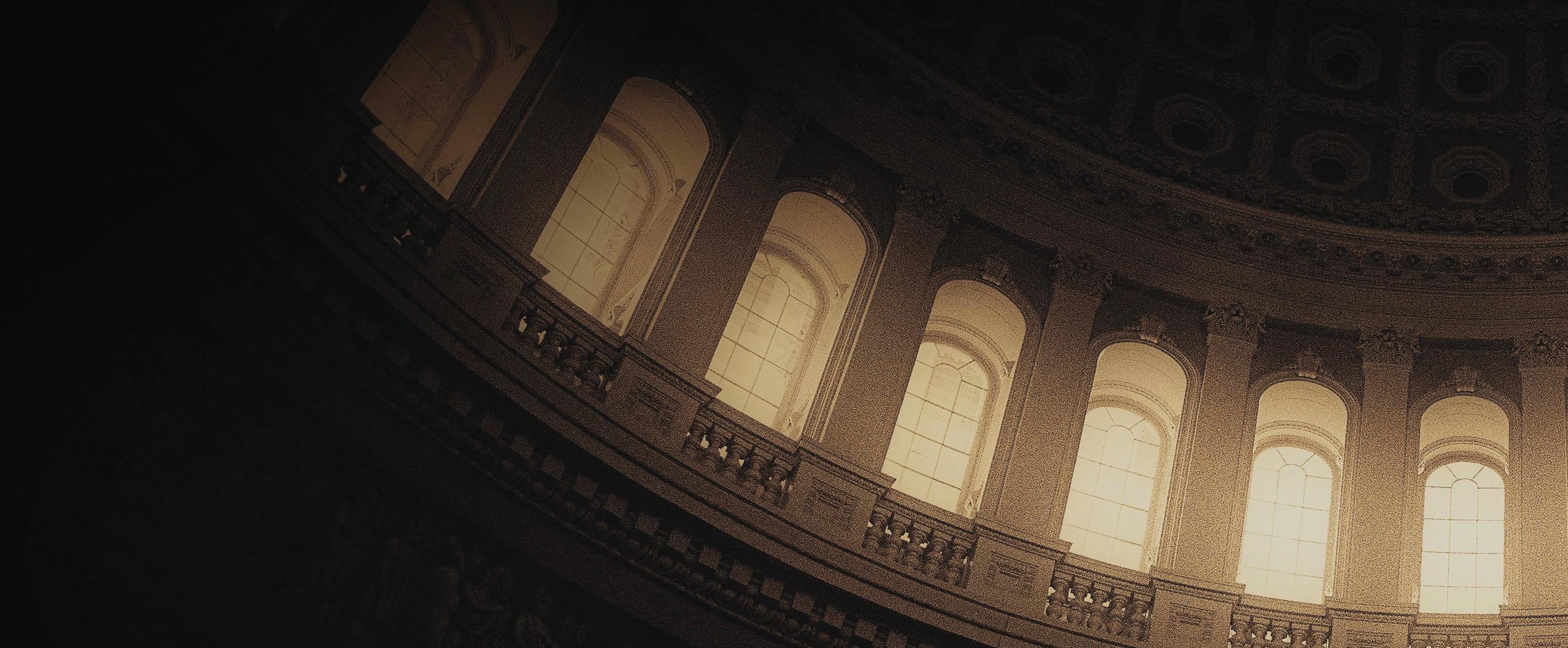
In the present era of gun violence uproar and demands for reform, the Americans of
2022 stand at a similar precipice.
Technology threatens to make armed citizens an even more difficult to manage problem than they already are. With our current model of manufacturing and distribution, a degree of tracking and enforcement is relatively easy, but with the advent of cheap and easily accessible 3D printers, making a very destructive gun in your garage with only a few external metal parts and almost no technical skill is becoming ever easier.
These guns have no serial numbers and are not traceable, making them next to impossible to regulate. If the United States were to ban guns nationwide, would they
also have to ban 3D printers? This is only one aspect of this issue, as 3D printers are only one of myriad possible weapons falling into the average citizen’s hands.
If we handle the gun violence issue without considering the prospect of increasing technology, we risk either establishing an unwelcome precedent or creating an unenforcible law.
So, let us elevate our discussion of gun violence and ask a more fundamental question: Should citizens be allowed to own tools capable of violence?
Until we ask this question, we risk doing more harm than good when we start cracking down on gun violence.
Dillon Wyatt
Will Spencer
18
Get out and vote for change
My parents break a promise every two years.
Not some low-level, insincere promise. Not some weak, I-promise-to-do-the-dishes-mom promise.No,my parents break a promise to their entire country. My parents don’t vote. They could be considered irresponsible citizens, but deciding to avoid the polling booth for the past decade doesn’t come from disregarding their duty as citizens.
They just don’t believe in America’s political system. Don’t believe voting will change anything. But they’re wrong.
For years, my parents certainly haven’t been alone. Across the nation, families have lost trust in the democratic process that America is so proud of, resulting in voter participation
numbers in the national election nearly consistently falling below 55% for the past 20 years. Even during the aggressive election of 2020, the voter participation rate rose to only 62 percent. Midterm elections boast even lower numbers, with voter turnout never reaching over 50 percent.Andas the 2022 midterm elections approach this October, there’s no better time for a change. Every angle, every view, every stance — about every thing — for months, they’ve incessantly screamed at us from every side.
In this nightmare of a political sphere, it has become impossible to know which side is correct, which opinion we should take seriously.
How to protect our democracy. How to protect our people. How to protect the kids not safe in their own classrooms.
There’s so much public discourse about how the government should change without

any individual action to see it happen. We seem to have forgotten that winning a debate over a policy the government should enact will not translate to the one the government will enact.
Because it doesn’t matter what policy is objectively better. There’s only one real solution. No matter how, something has to change.
But not through ceaseless fighting, debating, screaming. Through the polling booth. Through the town hall. Through a single vote. This is why my parents are wrong. The overwhelming backand-forth makes us forget we have the ultimate power as citizens. And it is our duty to use that power, no matter what “side” it’s for.
Though I won’t be 18 in time for the midterm elections, I know I won’t be like my parents when I can finally vote.

Even if we can’t see a change in this generation, at least we can start with the ballot boxes of the next.
Community key to preventing violence
We see the endless parade of catastrophe day in day Anotherout.shocking once in a lifetime disaster after another.
attending an affluent private school, it’s easy to picture the violence as part of another world. Belonging to another dimension that doesn’t contain 10600 Preston Road in it.
Aaron Augustine

Another list of names, who will never see twentythethatadulthood.Anothershootingwouldhaveshakennationtoitscoreyearsago.Anothereventthat
we have almost become entirely desensitized to.
What causes one to commit such a horrendous act? As a sixteen-year-old
After these tragedies occur, there are always a few assumptions that arise. We assume that all mass shooters suffer from mental illness, and that mass shootings are the result of deranged loners. But is this true?
The National Center for Health Statistics database show that less than five percent of gun homicides in the United States are committed by people diagnosed with mental illness.So, what really causes these shootings?
A more plausible explanation is that
alienation and social isolation lead to gun violence.Ironically, with the advent of technology made to enhance communication, we couldn’t be further apart. Several studies have described an increasing feeling among teenagers of social isolation, of being further apart from their peers.
Thus, the prevention of these disasters lies with our communities. So next time you see a new boy sitting by himself at lunch, take a chance and get to know him. By developing stronger intercommunal ties, not only do we promote a healthy environment, but we also develop a community of brothers who can all rely on each other.
Morgan Chow
OPINIONS 19
Taking
Story: Myles Lowenberg, Will Spencer
Photo: Creative Commons
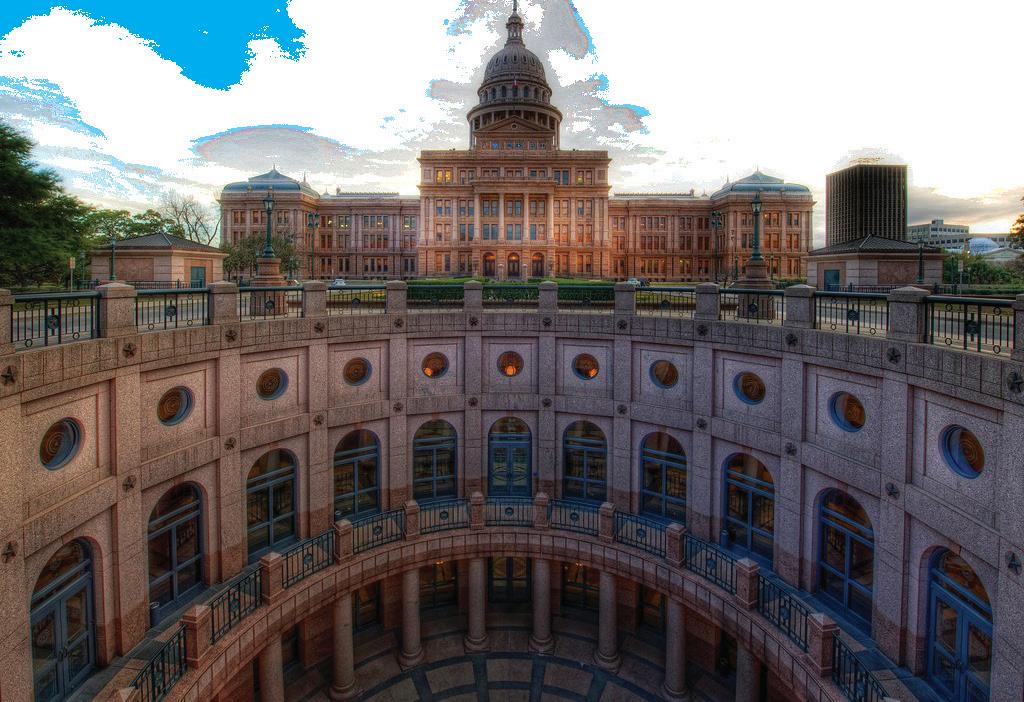
The capitol. The debate over responsethe to recent
20
Austin.controversyspurredpoliticsthroughhasviolencegunsweptTexasandnewin
Bipartisan bill in Washington
A usually highly polarized Con gress has acted on gun control with the Bipartisan Safer Communities act, which tackles multiple aspects of gun violence, from mental health to increased regulation on gun buying.
Supported by all 50 Democrats and 15 Republicans, the bill contains a fix to what’s commonly known as the
Congress passed the Bipartisan Safer Communities Act, which will close loopholes and allocate $750 million for mental health and intervention programs
“boyfriend loophole,” an exception to domestic violence law that allowed those convicted of domestic violence to own guns if their partner did not live with them or have children. It also requires more substantial reviews of anyone between the ages of 18-21 who would like to buy a gun.
In the Texan delegation to the
Senate, opinions on the bill were split. Although Texas Senators John Cornyn and Ted Cruz are both Republicans, Cornyn voted for the bill while Cruz voted against it.
The support of both parties’ Senate leadership for moderate rforms proved they had room for compromise.
The political responses to the mass shootings of 2022 varied significantly. In the federal government, a new gun control act was signed into law with the crucial support of some Republicans in the Senate that allowed the bipartisan bill to pass.
Nevertheless, this compromise and increased bipartisan emphasis on monitoring people instead of the weapons themselves has sparked criticism from those concerned about the civil rights that could potentially be threatened.
Online extremism and violence
In the discourse around mass shootings committed in the United States and abroad, many have pointed the finger at online communities of political extremists as those responsi ble for creating violent terrorists.
Brian Jenkins—the senior advisor to the president of the RAND Corpo ration, an independent think tank— acknowledges that the internet plays some role in radicalization through creating echo chambers insulated from outside views.
“The internet is a powerful means of communication and persuasion, possessing the ability to create com
In the bipartisan gun bill and others, lawmakers often place an emphasis on online communities to stop shootings before they start, but could this focus be counterproductive?
munities of like-minded people,” Jen kins said. “Those virtual communities can begin to go down a path toward more extremist views.”Despite this, Jenkins doubts that these extremist shootings.causingingplaycommunitiesaleadfactorinmass
“However, I don’t think that a person who is determined to be
peaceful could be persuaded by the internet to do something that they didn’t want to do,” Jenkins said.

Jenkins maintains that whatev er good censoring online commu nities could do, it would certainly be outweighed by the harm of violating First Amendment rights.
“Our view is that our democ racy depends on strictly respecting First Amendment rights,” Jenkins said. “We say that we can’t have any kind of controls on speech because they would violate the Bill of Rights.”
Brian Jenkins
TAKING ACTION 21
For thefromfuture,the past
Can’t let go The U.S. has yet to schools.ofaffecthasactionTheAustralia.Icelandcountriesnearlyresemblegun-freelikeandlackofwillandbeguntothefuturethenation:our

Story: Ben Adams and Dawson Yao
22
35 people killed.
28 Withincasualties.aspan of a couple hours in the small town of Port Arthur, Australia, Martin Bryant went on the one of the largest shooting sprees in the country’s short history. With an AR-15, Bryant took hostages and murdered families, eventually being apprehended after trying to flee, 18 hours after it had all started.
That was 30 years ago, and there hasn’t been another mass shooting in Australia since.
Because, only a month after the incident, the country implemented the National Firearm Act, or NFA, which bought back over 650,000 of all illegal guns, nearly 20 percent of the total number of firearms.
As a result of the NFA, the country saw a steep decline in shootings andThesuicides.national
homicide rate declined by nearly 42 percent.
Australian resident Isabella Searle can’t understand why the US hasn’t done the same.

In light of recent events in Uvalde, Texas, it’s clear why people in other countries think the United States has become unsafe. Searle thinks the same.“When I told people [in Australia] I was going to the U.S, their response was ‘Well, where are you going?’” Searle said. “When I said Texas, literally every single reaction was shock, and ‘You might not make it
home.”For elementary school teacher Gummi Gud mundsson from Iceland, the reaction was also the same.“When people come from small communities like Iceland, they only see the US from things online, like videos,” Gud mundsson said. “Bad things like that often give the US a bad reputation.”
In Iceland, guns are strictly regulated, as po lice aren’t even allowed access to them.To legally own a firearm, a citizen must hold a firearm’s license for five years before they can even obtain a collector’s license.
“The only people that are allowed to carry guns is a SWAT team, and even then, they only come out maybe once or twice a month,” Gud mundsson said. “Those are only for emergen cies, so if you were to walk down the street and see a police officer, they wouldn’t be holding a gun.”Though they aren’t completely sure, both
Gudmundsson and Searle think that something needs to be done. For Searle, the answer is obvi ous: to follow in the steps of Australia.
“We haven’t had a mass shooting since [Port Arthur],” Searle said. “Why doesn’t the US just followGudmundssonus?” has similar opinions, having seen the same situation in Australia.
“I think the US definitely has to take action, or make some sort of precaution.” Gudmunds son said. “We’ve seen Australia do a buyback, and that worked out really well.”

For both of them, in the end it comes down to the safety of the people. Though Gudmunds son has felt safe in the United States, he knows of dangers, and wants to prevent them from happening.“I’vefelt really safe in the communities I’ve been in, especially because of the protocols,” Gundmundsson said. “However, I’m assum ing most of us [in Iceland] think that the US should just ban guns. But obviously, that’s not easy.”
Searle also feels the same way. In Australia, many view traveling to the United States should be done not for leisure, but mainly for work and school.
“For us, its a matter of, ‘Do you prioritize your gun use over people’s lives?” Searle said.
“Its’ really scary to think that you just might not come home from America.”
Isabella Searle
GundmundssonGummi FOR THE FUTURE, FROM THE PAST 23
Taken apart. A rifle given to Guns to Gardens is scrapped into its parts. Soon, it will be melted down to tools.gardeningcreate guns to gardens
Story: Linyang Lee

24
Heal our hearts. Heal our streets. Heal our world. They stand together in prayer.
The litany finishes with “Amen.” All gather around the saw. It spins to life. Sparks fly onto the concrete. Smoke rises from the machine.
The hunk of metal on the table is repositioned.
Once more, the saw bites into the metal. Sparks flying.
Again, it’s repositioned.
More spinning. More sparks. More smoke.
Then, the saw lifts. The spinning slows.
The whirring grows fainter. Replaced by Forapplause.there on the saw lay the remains of the handgun. Properly destroyed.Nolonger would it be an instrument of death. But soon, an instrument of life.
In light of the Parkland shooting, the Rev. Andrew Fiser, pastor at Greenland Hills United Methodist Church, had decided to get rid of his own guns as a personal act of conscience.
“[I] took my firearms, which were mostly hunting and sporting weapons that I inherited, to Grapevine Police Department,” Fiser said. “And they took them, and we had kind of a prayerful act of decommissioning.”Somepolicedepartments would have resold the guns and returned them to the market. But not Grapevine. The Grapevine Police Department made sure the guns were melted down. And Fiser wanted to help others do the same.
So, he got involved with the Gun Sense
garden tools — leaning into that vision of swords into plowshares and spears into pruning hooks from Isaiah.”Individuals who wish to have their weapons decommissioned usually call the Rev. Deanna Hollas, who is trained to dismantle firearms according to the ATF regulations.
Hollas decommissioned the first gun for Faith Forward Dallas’ Gun Sense project, which transforms guns into garden tools with the help of RAWTools, the organization that forges the tools.
“That was my first,” said the Rev. Deanna Hollas, the Gun Violence Ministry Coordinator of the Presbyterian Church. “So after I did that, I discovered it was a little bit harder than I was prepared for. And it’s hard to get the gun mounted on the saw, because, you know, they’re not nice flat pieces — they’ve got these things that stick out everywhere.”
Soon after the parts of the handgun Hollas decommissioned were mailed, she received a phone call from the founder of RAWTools, Mike Martin.
“He knew that I had a saw,” Hollas said. “He knew that I dismantled this gun, so I was now on his list of people to call when people reached out to him [to have their guns decommissioned]. And so he called me and said, ‘I’ve got somebody with seven guns. Would you like to dismantle them?’ And I was like, ‘I might need a little more training before I do this.’”
to specific ATF, or Bureau of Alcohol, Tobacco, Firearms and Explosives, guidelines.
“Once we use a chop saw to saw them, they have to have specific cuts on specific components to render them useless so that they can then be mailed to the forge there at RAWTools,” said Fiser, the Gun Sense Task Force Coordinator at Faith Forward Dallas. “They take them and create art of various kinds — necklaces,
So, Martin invited Hollas to come to a Guns to Gardens event at Community United Church of Christ of Boulder.
“They were hosting a gun buy back event in which they were going to chop up guns for the community and turn them into garden tools with RAWtools,” Hollas said. “So I went to the event they had.”
accordingchopcutgunsevents,Atevents.GardensGunshostingDallas,ForwardatprojectFaithtothesethearewithasaw
No longer would it be an instrumentofdeath. GUNS TO GARDENS 25
The event was in direct response to the mass shooting that occurred at the King Soopers grocery store in Boulder.
“This was just blocks from their church, and they were told that there was nothing they could do,” Hollas said. “So they heard about RAWtools and decided that they could be a place for people to safely surrender guns.”
Six chop saws were set up on the church’s grounds. The foundry was onsite. They had gift cards ready to exchange for the guns.
“And that day they took in 32 guns that they dismantled for the gun owners in that community,” Hollas said.
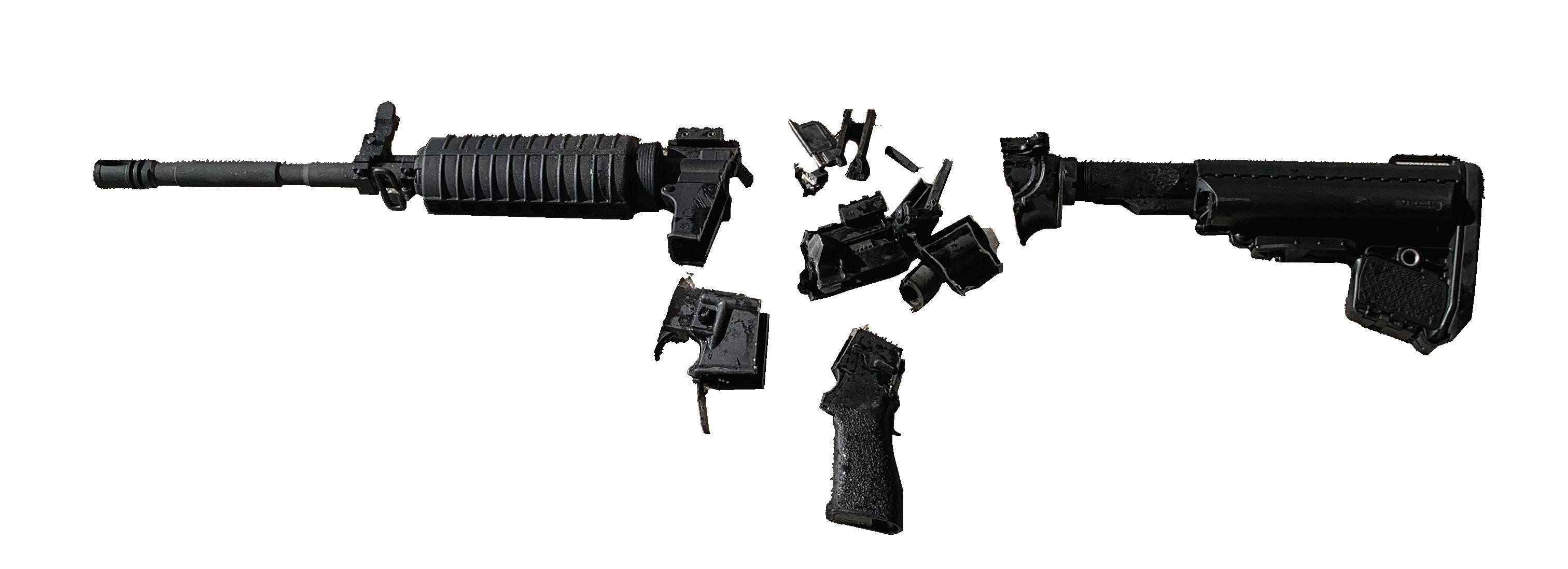
Hollas has also been to a Guns to Gardens event that the Denver Broncos hosted at Broncos stadium. There, over a 100 guns were decommissioned.“Therewerefolks [at the event] that have found guns,” Hollas said. “Like one guy bought his house, and there were three guns behind the heating unit there. Another guy had his gun for like 30 years. It came with his car.”
But after carrying the small handgun around for 30 years, the man felt he didn’t really need
“Heit. was like ‘I’m not gonna shoot anybody, I should get rid of this,’” Hollas said. “So people do it for all kinds of different reasons. But often times when there’s a big event and they see that they can do this and maybe make a little money, it’s that little nudge to prompt them, to make that commitment to say, ‘I really don’t need this,’ and the realization that it’s not safe for them to have it anymore.”
Hollas had also decommissioned guns at the NRA Annual meetings in Houston last September.“Mike Martin was there with saws, and we chopped up guns,” Hollas said. “One was an AR-15 that somebody won in a Little League raffle, how about that? And they said when they

bought the raffle ticket they didn’t realize what the prize was. And so they had this AR-15 that they absolutely did not want.”
Guns to Gardens events have not only been held in Texas and Colorado, but all across the country.Infact, a large group of churches organized and all held Guns to Gardens events June 11th as part of a nationwide gun buyback event.
A church in Oakland. A congregation in Sandy, Utah. A Lutheran pastor in Madison, Wisconsin learned blacksmithing to hold an event. An episcopal pastor in Ohio did the same. For many it was their first, but New Mexicans to Prevent Gun Violence had theirbutatgenerallyGunMexicansoverdecommissionedalready1000guns.“Now[NewtoPreventViolence]dothempolicestations,June11thwasfirsttimetodo
it at a church,” Hollas said. “It was the biggest event they’d had. They had cars lined up for two blocks down the street. They ran out of gift cards, and people said they didn’t care, they just wanted to get rid of their guns.”
One person there commented that they appreciated it was at a church instead of a police station because it didn’t make them feel like they were a criminal for wanting to get rid of their“Whenguns.it’s in a police station, which is fine, it’s very transactional,” Hollas said. “And one of the things we say is that churches are a place of healing. We add shepherds, so the shepherds are there, and one of the things they found in Boulder is that they would just ask, ‘Is there
anything you want to tell us?’ And the stories just come pouring out because there can be some really strong emotions around guns both positive and negatively.”
Hollas has seen this emotion firsthand.
“I’ve done some in which this [gun] was a tie to a grandparent, fond memories of going hunting on the farm or shooting,” Hollas said. “And so you know, disarming it brings up kind of those memories, that it’s an end to this era. I’ve disarmed for somebody whose dad used to threaten them with a gun so there were lots of painful memories around them.”
Hollas first saw how meaningful these events were for those donating guns at Boulder.
“Boulder was powerful from beginning to end,” Hollas said. “I still get chills just thinking about it — the different things they experienced, how healing it was for the community — because one of the things that gun violence does in any type of trauma is it shuts us down. It can make us go inward, and the way to work through trauma is movement, to actually have something that’s empowering. And that’s one of the challenges that folks that do gun violence prevention can often feel discouraged is that you just have to wait for lawmakers, and our lawmakers have been in a stalemate.”Hollas believes Guns to Gardens is a way to feel empowered in the midst of this powerlessness.“Youknow you make a difference when you get to talk to that gun owner, and you know that you’re making that home and that household safe,” Hollas said. “You know that you’re bringing healing… and so for the gun owners, it means a lot to know that their gun won’t be used for future harm.”
People also appreciate the fact that the gun would be used to create something useful, even life-giving.
Decomissioned for good. The scraps from a rifle taken apart by the organization sit and wait for the next stage of their use, now for other purposes.
Rev. Andrew Fiser
26
“That [idea] came up over and over again when I was in Denver and I was talking to people,” Hollas said. “Because I was kind of like, ‘Oh it’s not going to be used for harm.’ But they were like, ‘It does get turned into a tool, and that’s really cool.’ So I couldn’t overlook that that was the main driver for people who show up and bring their guns.”
It is the overwhelming feeling of gratitude from the gun owners that keeps Hollas going.
“We have this narrative about ‘don’t take my guns away’, right?” Hollas said. “And we’re not taking any guns away. We’re not the gov ernment, we’re just followers of our faith who happen to have a saw. And if you’ve got a gun, and you want to get rid of it, and you want to be reassured it won’t be used for harm and you want to see it used for good, we’ll help you out.”
Not only does Hollas decommission guns, but she also sends congregational toolkits to churches to help them start combatting gun violence.“It’s usually where a lot of people start be cause it has lots of ideas, lots of helpful resourc es in there for how to get started with having a regular ministry of gun violence prevention,” Hollas said. “And as of the end of last year, we started training. We have action circles, they run for six weeks, and we teach people how to hold guns to gardens events.”
Individuals can get involved in Guns to Gardens events in Dallas too.
“The easiest way would be to contact Deanna Hollas or myself so that the next time there’s an event they can come and experience it, we can give them a volunteer role,” Fiser said. “And I think that’s a good way to just experi ence what this kind of decommissioning event is and to be in conversation about their own experiences with gun culture.”
So far Faith Forward Dallas has decommissioned over 20 guns.
“It’s not a high number of guns, and we’re hoping to of course increase that,” Fiser said. “But a number of these weapons have been involved in suicides, where families don’t know what to do with that weapon and would like a prayerful, healing way to take it out of circula tion,” Fiser said. “[We’ve also had] weapons that have been part of family violence. There have been really healing experiences for the family members that come with these [weapons].”
Fiser hopes that over the next year, Faith Forward Dallas may build partnerships that can help allow more Guns to Gardens events to take place.“We would love to have an event like [the Denver Broncos] where we can get the word out to people who want to participate,” Fiser said. “And that’s the tough thing, letting people know that this even is a possibility.”
Ultimately, both Fiser and Hollas believe Guns to Gardens events can help tell a different story.“For actions like this I think it is more about the witness toward an alternative way

of life that we can have if we are to implement broader actions,” Fiser said. “This is a starting place, a prayerful starting place that is healing for folks that have been affected by gun violence and threats. It takes guns out of circulation. I think we have about 300
bepointacanthatsomethingandinwe’repoint.atcirculationgunsmillioninthisSoawashfirearms,thatisweuseasleveragetoevenmore
effective. I think, at this point, people feel because of the NRA and the gun industry having such a presence in our life as a country, it doesn’t feel like an alternative reality is possible. So, when you create even a small space in which people can think ‘Oh. We could do this.’ That brings a lot of hope and space for change.”
The deconstruction. A volunteer takes apart a gun at a Dallas location with a chop saw.
It’s a tough thing, letting people know that this is even a possibility.
GUNS TO GARDENS 27
Are weSAFE?
 Story: Shreyan Daulat, Grayson Redmond, Matthew Hofmann
Open campus. While the school’s open campus environment is loved by most students, faculty and staff, it may pose safety and security concerns.
Photo: Courtesy Development Office
Story: Shreyan Daulat, Grayson Redmond, Matthew Hofmann
Open campus. While the school’s open campus environment is loved by most students, faculty and staff, it may pose safety and security concerns.
Photo: Courtesy Development Office
7
28
Security technologies and strategies are constantly changing and evolving as new threats present themselves, and so is the security team at 10600 Preston Road. Headmaster David Dini has seen its development firsthand over the many years he has worked on campus.

“It’s been a steady and thoughtful escalation of both time, energy and investment in the resources that we devote to campus security,” Dini said, “to ensure that as potential pressures increase — whether it’s gun violence or any other kinds of security — we’re prepared.”According to Dini, an invaluable leg up the security staff possesses is their experience, with most members having served in security, the police force or even SWAT before joining the team.
“Our belief is that having experienced professionals on campus is the most important thing we can possibly do,” Dini said, “because you never know what threat might come our way or what emergency might occur. We want to have people that are accustomed to responding to those kinds of challenges.”
This tenured staff, led by Director of Security Dale Hackbarth, is constantly revising existing safety measures and developing new ones around campus, with some of these background.remainingandvisualbeingdeterrentsothersinthe“Wehavetaken
measures to make the campus safe and secure while keeping the welcoming atmosphere,” Hackbarth said. “An example of a visible deterrent would be the automatic back alley and Orchid Lane gates that help to funnel incoming day-time traffic through the main Preston
Road entrance and support our policy of personally greeting all guests to campus. Members of our Security Team also consistently move around the campus in marked golf carts, allowing team members to be as visible, accessible and responsive as possible.”
However, despite the continuous hard work and dedication of the security staff to make campus as safe as possible, the possibility of an act of violence continues to lurk in the shadows. Fortunately, Hackbarth and his staff have outlined a plan for the school community to follow in case danger ever arises.
“We firmly believe and consistently reinforce the practice of ‘run, hide, fight,’” Hackbarth said. “The plan needs to be simple to be memorable and quickly enacted: Run if you can safely do so and have an escape route in mind, hide if evacuation is not possible and fight as a last resort only when your life is in imminent danger.”
Yet, the focus still remains on preventing a violent situation from occurring in the first place.
“There are many layers that go into planning and training for a potential risk like that,” Dini said.
“Much of it involves mitigation of the risk itself. We want to create as many obstacles and deterrents as possible for any potential intruder or aggressor, and that’s a constant process that you never achieve fully.”
Of the school’s five former law enforcement security team members, four were part of SWAT. This has created a unique and long standing relationship with SWAT that poses benefits for both the school and
Feb. 1. Rufus King High School — Milwaukee, Wisconsin. Five injured.March 7. East High School — Des Moines, Iowa. One killed, two injured.May24. Robb Elementary — Uvalde, Texas. 21 killed, 16 injured. Three of 27 shootings at schools around the country just this year. With a rise in gun violence — involving increasingly deadly weapons — there’s no doubt the school’s open campus environment poses concern. School security and administration take steps to prepare for the unthinkable . constantly looking to
Dale Hackbarth
We’re
strenthensecurity.
ARE WE SAFE? 29
Dallas’ safety as a whole.
“For many years, we have coordinated with the Dallas Police Department to have SWAT train on our campus during the summer months when specific buildings are not in use,” Hackbarth said. “The teams practice a variety of movements in the empty buildings to simulate potential emergencies that could happen on any school campus, like breaching through doors, hallway and room clearing in different crisis situations involving hostage rescue, barricaded persons and active shooter situations. This long standing practice is not only beneficial to DPD, but also routinely brings SWAT officers to our campus for training and increases their familiarity with our facilities, personnel and our Throughcommunity.”activediscussions, the security team strives to prepare both themselves and students for any hostile situation.“Theleaders of our security team conduct age-appropriate discussions every year on what to do during a crisis,” Hackbarth said. “We discuss lockdowns, lockouts, shelter in place and evacuations along with other drills. I do not recommend simulating an active shooting environment that could cause unnecessary anxiety and stress. We train through discussions and lead the boys through visual presentations about potential risks and how to respond in case of various types of emergencies.”
Dini finds value in the precautionary approach the team takes that allows us to enjoy the open campus environment.
“I’m grateful that we have such a strong and effective team that works really hard every day to keep all of us safe,” Dini said. “We never take any of that for granted. We want to make sure we are doing everything possible to maintain the security of the school campus, which is a home we all love and enjoy. At the same time, we want to apply extremely high expectations and standards of vigilance and risk mitigation so that we can preserve and enhance that over time. We’ve got to remain super vigilant. And we’re certainly committed to that.”
the plan
In the event of an active shooter, the security team has outlined a “simple and memorable” plan of action.
RUN
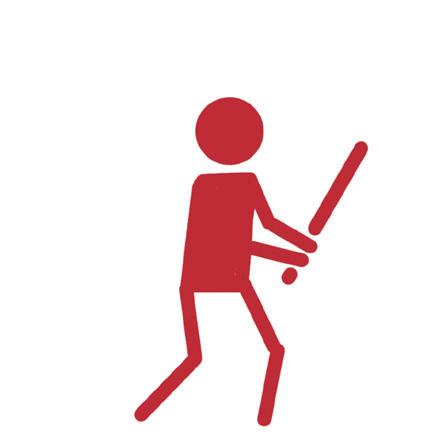

HIDE
FIGHT
Run — if you can safely do so. Have an escape route in mind.

Hide — evacuationif is not findpossible,aplaceto Fighthide.
— if it’s a last resort and when your life is in danger.imminent Shreyan Daulat, Morgan Chow
Infographic:
307
 Guarding out front. The school’s security team — comprised of seven experienced officers and guards — stands firm in front of Nearburg Hall, the front of campus. Each has his own duties and responsibilities each day to continue to improve campus safety and security.
Dale Hackbarth
Don Jonathan Tilley Doug Brady
Tim Houston Kent
Martin Hoffer
Julious
Photo: Jack
Guarding out front. The school’s security team — comprised of seven experienced officers and guards — stands firm in front of Nearburg Hall, the front of campus. Each has his own duties and responsibilities each day to continue to improve campus safety and security.
Dale Hackbarth
Don Jonathan Tilley Doug Brady
Tim Houston Kent
Martin Hoffer
Julious
Photo: Jack
campus protectors
Humphrey
Witt
Connor Daniel Mauch Position: Director of Security Year Appointed: 2013 Position: Security Guard Year Appointed: 2010 Position: Security Guard Year Appointed: 2011 Position: Campus Security Officer Year Appointed: 2019 Position: Campus Security Officer Year Appointed: 2019 Position: Security Officer Year Appointed: 2016 Position: Associate Director of Campus Safety and Security Year Appointed: 2016 Position: Assistant Director of YearSecurityAppointed: 2001 Position: Security Guard Year Appointed: 1997 ARE WE SAFE? 31
Courtesy
Cohen
